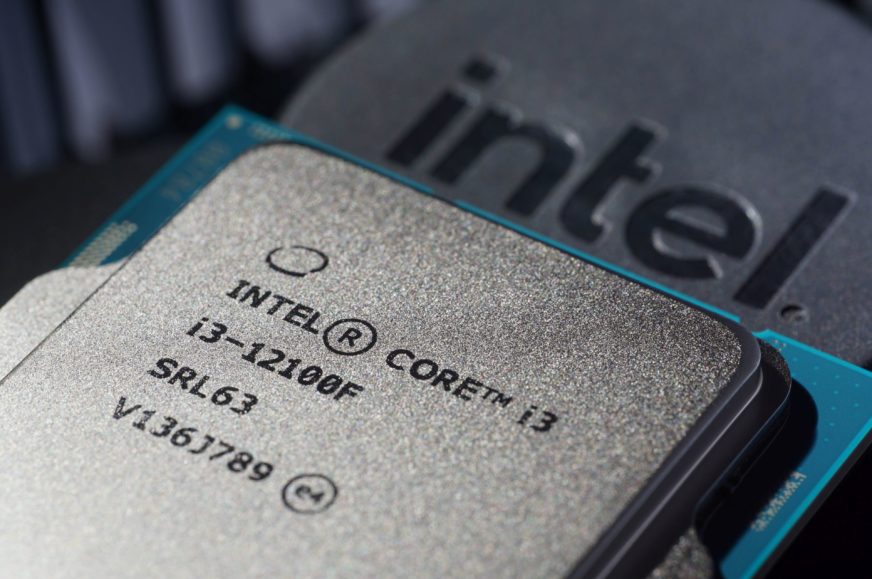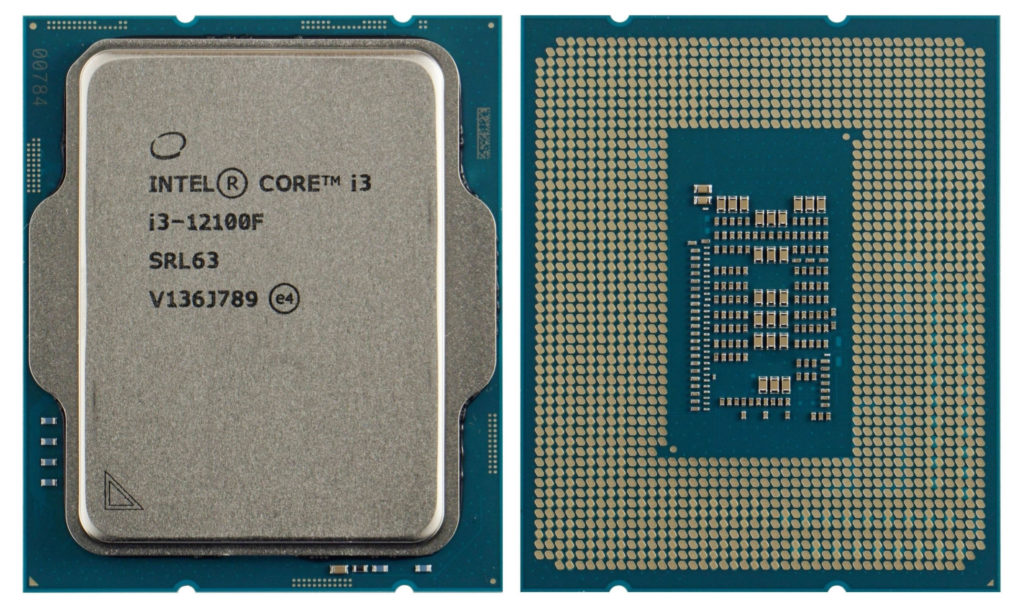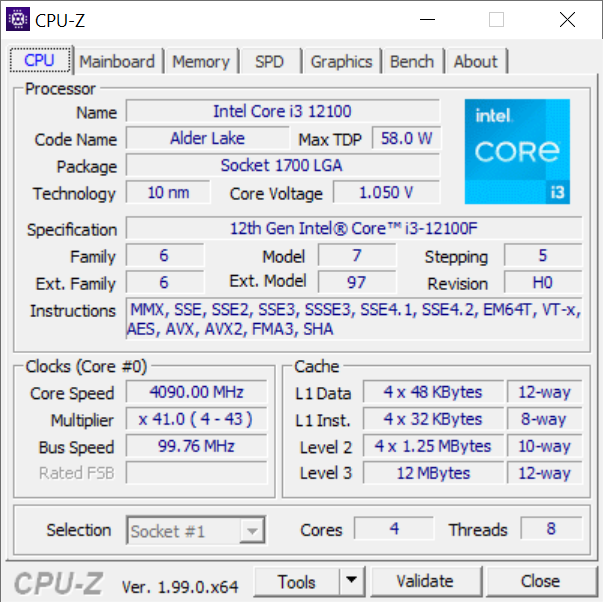Intel Core i3-12100F in detail
We recently enjoyed the pleasing results of the Core i3-10105F here, and that processor already has a successor – the 12100F. It presents an option in the Alder Lake family for users on a budget. But that doesn’t mean it will limit you in performance. Plus, in target environments (especially simpler gaming PC builds), the latest Core i3 is nicely power-efficient without breaking your bank account.
Intel Core i3-12100F in detail
This year’s wave of new Alder Lake-S processors has expanded to include the Core i3-12100(F). These are significantly cheaper than the Core i5-12400(F), roughly 40 % cheaper, and still have four cores. The even cheaper Pentiums are still only dual-core. We’ll find out how big a bottleneck such processors are on modern games and applications sometime later.
Now we will be interested in the quad-core Core i3-12100F with eight threads. The same configuration in terms of number of cores and threads – Core i3-10105F – has shown itself in a very good light, but it is already an “old and unfashionable” Comet Lake on 14 nm. The Core i3 Alder Lake is already 7 nm, or made by Intel’s 7 process. It should not be far from 7 nm TSMC (AMD Ryzen 5000 processors) technologically..
Significantly different from many of its predecessors is the Golden Cove architecture as well, with a higher IPC (instructions per clock), on which the Ci3-12100(F) is built. This is specifically on a smaller chip with an area of approximately 160 mm 2. For these processors, there are no longer two different variants with different chips, as is the case with the Core i5-12400(F), but only one. It is a native 6-core with no physically present small “E” Gracemont cores.
Thus, only two “P” cores are deactivated or non-functional in the Core i3-12100(F). Therefore, four powerful Golden Cove cores with HyperThreading support are available (one core works in two threads to increase performance). The Core i3 variant that we will cover in detail in these tests is the one with the “F” in the designation, that is, it has the integrated graphics core disabled and a dedicated graphics card needs to be used.
The Core i3-12100F has a lower TDP (58W) for base frequencies than the Core i5-12400F (65W), but also than the Core i3-10105F (65W), which is remarkable. Don’t be fooled though, this doesn’t mean that the new Core i3 (12100F) always has to be more power efficient. And as you’ll see from the tests themselves, it won’t be, with the no-power-limit setting, either.
The PL2 values (i.e. for short-term load) have not changed much between generations (89 vs. 90 W) and the Core i3-12100F is supposed to be a symbolic one watt more efficient. But that’s only if you have your power limits set according to Intel’s recommendations. Most motherboards don’t, and even within the preset profiles the most power-efficient often only accept PL1 (TDP) and PL2 already has the reins loosened more aggressively. However, the paper parameters with 100 MHz faster multi-core boost (4.1 GHz) than the Ci5-12400(F) always refer to settings without power limits. With them, the frequencies for long-term load are significantly lower, in the case of the tested Core i3-12100F at 3.3 GHz.
Let’s also remind ourselves that the Core i3-12100F is like all Intel Alder Lake-S processors, i.e. with support for both DDR4 and DDR5 memory types. The application in this price range for very expensive DDR5 memory is questionable, similarly to the PCI Express 5.0 interface. The V socket (LGA 1700) is also new, and the change in hole spacing for mounting coolers now affects everyone. The Core i3 class comes with Intel Laminar RM1 coolers, for which an in-depth HWCooling analysis is in the works, and you’ll find out soon enough if they’re anything to write home about.
| Manufacturer | Intel | Intel | Intel | |
| Line | Core i3 | Core i5 | Core i3 | |
| SKU | 12100F | 12400 | 10105F | |
| Codename | Alder Lake | Alder Lake | Comet Lake | |
| CPU microarchitecture | Golden Cove (P) | Golden Cove (P) | Skylake | |
| Manufacturing node | 7 nm | 7 nm | 14 nm | |
| Socket | LGA 1700 | LGA 1700 | LGA 1200 | |
| Launch date | 01/04/2022 | 01/04/2022 | Q1/2021 | |
| Launch price | 97 USD | 192 USD | 97 USD | |
| Core count | 4 | 6 | 4 | |
| Thread count | 8 | 12 | 8 | |
| Base frequency | 3.3 GHz (P) | 2.5 GHz (P) | 3.7 GHz | |
| Max. Boost (1 core) | 4.3 GHz (P) | 4.4 GHz (P) | 4.4 GHz | |
| Max. boost (all-core) | 4.1 GHz (P) | 4.0 GHz (P) | 4.2 GHz | |
| Typ boostu | TB 2.0 | TB 2.0 | TB 2.0 | |
| L1i cache | 32 kB/core (P) | 32 kB/core (P) | 32 kB/core | |
| L1d cache | 48 kB/core (P) | 48 kB/core (P) | 32 kB/core | |
| L2 cache | 1.25 MB/core (P) | 1,25 MB/core (P) | 256 kB/core | |
| L3 cache | 1× 12 MB | 1× 18 MB | 1× 6 MB | |
| TDP | 58 W | 65 W | 65 W | |
| Max. power draw during boost | 89 W (PL2) | 117 W (PL2) | 90 W (PL2) | |
| Overclocking support | No | No | No | |
| Memory (RAM) support | DDR5-4800/DDR4-3200 | DDR5-4800/DDR4-3200 | DDR4-2666 | |
| Memory channel count | 2× 64 bit | 2× 64 bit | 2× 64 bit | |
| RAM bandwidth | 76.8 GB/s or 51.2 GB/s (DDR4) | 76.8 GB/s or 51.2 GB/s (DDR4) | 42.7 GB/s | |
| ECC RAM support | No | No | No | |
| PCI Express support | 5.0/4.0 | 5.0/4.0 | 3.0 | |
| PCI Express lanes | ×16 (5.0) + ×4 (4.0) | ×16 (5.0) + ×4 (4.0) | ×16 | |
| Chipset downlink | DMI 4.0 ×8 | DMI 4.0 ×8 | DMI 3.0 ×4 | |
| Chipset downlink bandwidth | 16.0 GB/s duplex | 16.0 GB/s duplex | 4.0 GB/s duplex | |
| BCLK | 100 MHz | 100 MHz | 100 MHz | |
| Die size | ~160 mm² | ~209 or ~160 mm² (depending on variant) | 149.6 mm² | |
| Transistor count | ? bn. | ? bn. | ? bn. | |
| TIM used under IHS | Solder | Solder * | Paste | |
| Boxed cooler in package | Intel Laminar RM1 | Intel Laminar RM1 | top-flow with copper core | |
| Instruction set extensions | SSE4.2, AVX2, FMA, SHA, VNNI (256-bit), GNA 2.0, VAES (256-bit) | SSE4.2, AVX2, FMA, SHA, VNNI (256-bit), GNA 2.0, VAES (256-bit) | SSE4.2, AVX2, FMA, SGX | |
| Virtualization | VT-x, VT-d, EPT | VT-x, VT-d, EPT | VT-x, VT-d, EPT | |
| Integrated GPU | N/A | UHD 730 | N/A | |
| GPU architecture | – | Xe LP (Gen. 12) | – | |
| GPU: shader count | – | 24 | – | |
| GPU: TMU count | – | 12 | – | |
| GPU: ROP count | – | 8 | – | |
| GPU frequency | – | 350–1550 MHz | – | |
| Display outputs | – | DP 1.4a, HDMI 2.0b | – | |
| Max. resolution | – | 5120 × 3200 px (60 Hz) | – | |
| HW video decode | – | AV1, HEVC, VP9 | – | |
| HW video encode | – | HEVC, VP9 | – |
- Contents
- Intel Core i3-12100F in detail
- Methodology: performance tests
- Methodology: how we measure power draw
- Methodology: temperature and clock speed tests
- Test setup
- 3DMark
- Assassin’s Creed: Valhalla
- Borderlands 3
- Counter-Strike: GO
- Cyberpunk 2077
- DOOM Eternal
- F1 2020
- Metro Exodus
- Microsoft Flight Simulator
- Shadow of the Tomb Raider
- Total War Saga: Troy
- Overall gaming performance
- Gaming performance per euro
- PCMark and Geekbench
- Web performance
- 3D rendering: Cinebench, Blender, ...
- Video 1/2: Adobe Premiere Pro
- Video 1/2: DaVinci Resolve Studio
- Graphic effects: Adobe After Effects
- Video encoding
- Audio encoding
- Broadcasting (OBS a Xsplit)
- Photos 1/2: Adobe Photoshop and Lightroom
- Photos 2/2: Affinity Photo, AI aplikácie Topaz Labs, ZPS X, ...
- (De)compression
- (De)encryption
- Numerical computing
- Simulations
- Memory and cache tests
- Processor power draw curve
- Average processor power draw
- Performance per watt
- Achieved CPU clock speed
- CPU temperature
- Conclusion










